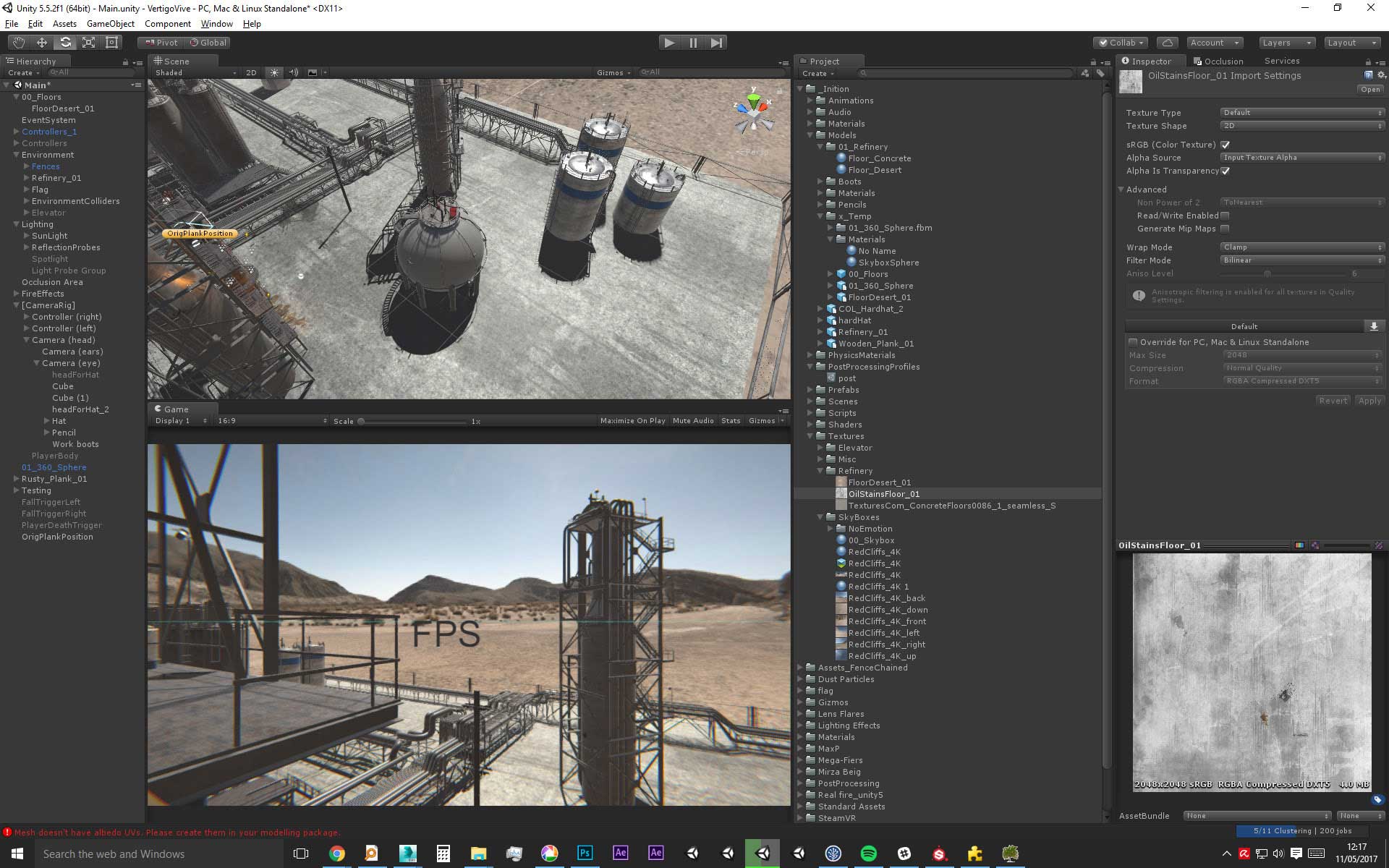VERTIGO R&D
’WALK THE PLANK’
Company: INITION
Role: Designer, Programmer






DESCRIPTION
I created an R&D project intended to test out the HTC Vive ‘Puck’ trackers and how they could be used for a ‘walk the plank’ experience. In this case, various options were tested with the aim of designing the most realistic and tension-filled walk.
The environment was an industrial power station with various generators, pumps and pipes which were enclosed by a chain-link fence. A 360 video was used for the background (or skybox) as it provided the most immersive panorama.
The puck trackers were attached to a pair of light-weight shoes which the user wore during the experience. 3D models were then added inside the game (in this case, work boots) so that the user’s foot movements in the real-world could be tracked and seen in VR. This meant that the user could carefully focus on placing each foot one in front of the other to get across to the other side. Testing confirmed that this proved to be a much more effective way to create the sensation of Vertigo and therefore heighten the experience.
Aside from adding trackers to the player’s feet, I persevered to improve on this design by experimenting with other aspects. It was vital to maintain focus around how the player could fall at any moment and to remind them of this where possible.
I decided to explore how the plank itself could play a part in this. A bending/warping animation system was set up that reacted (or appeared to react) under the player’s weight as they moved across. A gentle up/down bobbing effect was also added to make the warping feel more realistic. It was found that this animation system further heightened the experience. Users were seen turning back as they approached the mid-way point, where the plank would bend the most and therefore most likely to break.
Other things that seemed important were incidental events that reminded the player how the physical world would affect them if they fell. An organic way to illustrate this was to give the player a hard hat, making sure the yellow brim was visible to the player in VR. The hat was then designed to fall off of the player’s head if they spent too long looking downwards at their feet and not moving very much. Watching the hat fall helps the player to understand the parameters of the world, and increases the overall feeling of presence. This was most effective when the hat collided with the plank, pipes or other objects on its descent. It also had the added bonus of making them feel that they had lost a personal item for good.
The project was used as a template for a number of experiences which included walking across a plank, void or rope bridge, or whenever trying to create the sensation of Vertigo in VR.
BRIEF
SPECIFICATION
Objective: Design the most tension-filled ‘walk the plank’ experience possible.
Core Gameplay: Walk across the plank.
Environment: Industrial, factory, power station.
Endgame/Reward: Get the other side. Good luck!
Target Audience: Everyone.
Play Time: ~ 2 seconds - 20 minutes
Comfort: 3/5
TECHNICAL
Digital Medium: Virtual Reality
VR Platform: HTC Vive with 2 x Puck Trackers
Locomotion System: 1:1 room scale
